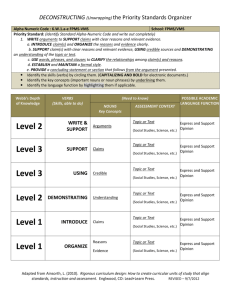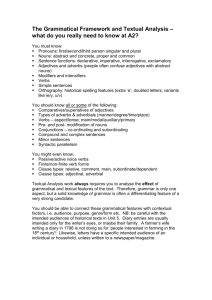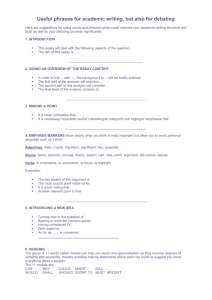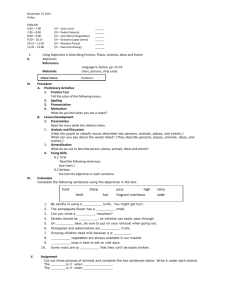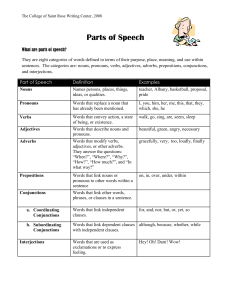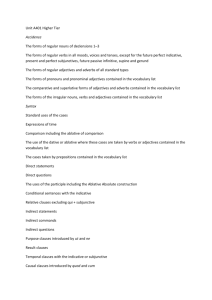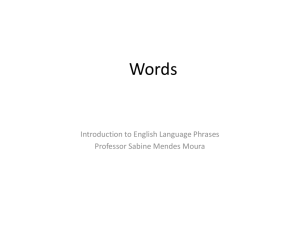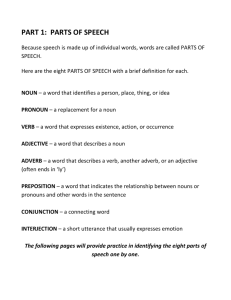Guide to Textual Analysis This is a simplified version of the guide to
advertisement
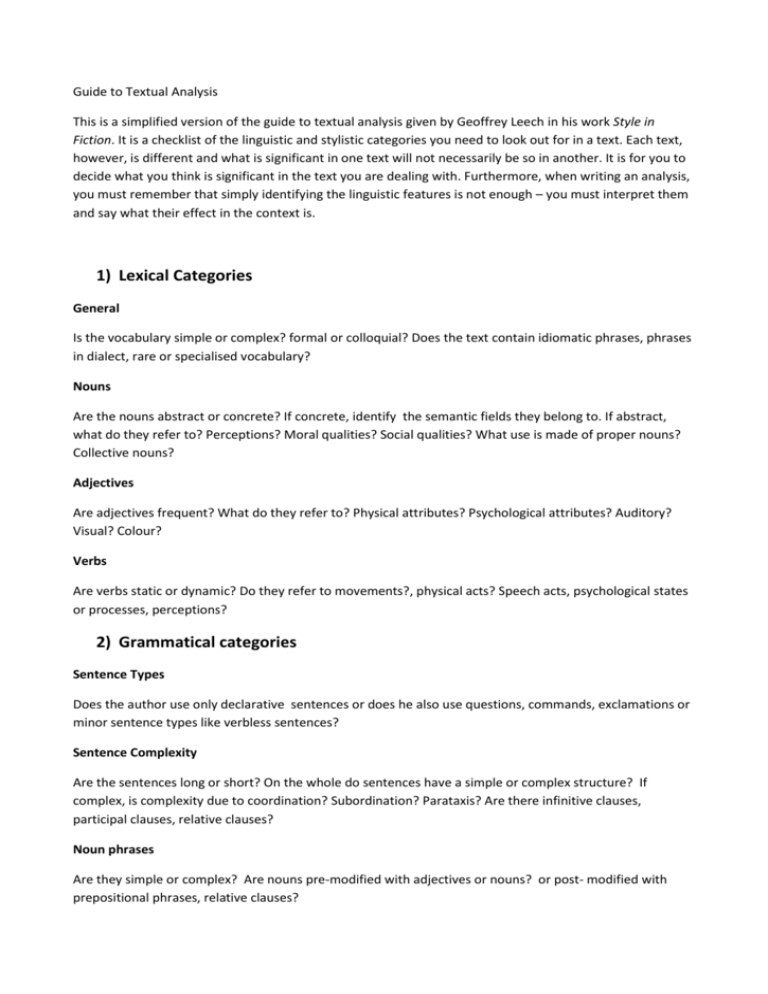
Guide to Textual Analysis This is a simplified version of the guide to textual analysis given by Geoffrey Leech in his work Style in Fiction. It is a checklist of the linguistic and stylistic categories you need to look out for in a text. Each text, however, is different and what is significant in one text will not necessarily be so in another. It is for you to decide what you think is significant in the text you are dealing with. Furthermore, when writing an analysis, you must remember that simply identifying the linguistic features is not enough – you must interpret them and say what their effect in the context is. 1) Lexical Categories General Is the vocabulary simple or complex? formal or colloquial? Does the text contain idiomatic phrases, phrases in dialect, rare or specialised vocabulary? Nouns Are the nouns abstract or concrete? If concrete, identify the semantic fields they belong to. If abstract, what do they refer to? Perceptions? Moral qualities? Social qualities? What use is made of proper nouns? Collective nouns? Adjectives Are adjectives frequent? What do they refer to? Physical attributes? Psychological attributes? Auditory? Visual? Colour? Verbs Are verbs static or dynamic? Do they refer to movements?, physical acts? Speech acts, psychological states or processes, perceptions? 2) Grammatical categories Sentence Types Does the author use only declarative sentences or does he also use questions, commands, exclamations or minor sentence types like verbless sentences? Sentence Complexity Are the sentences long or short? On the whole do sentences have a simple or complex structure? If complex, is complexity due to coordination? Subordination? Parataxis? Are there infinitive clauses, participal clauses, relative clauses? Noun phrases Are they simple or complex? Are nouns pre-modified with adjectives or nouns? or post- modified with prepositional phrases, relative clauses? Verb phrases Are there any significant departures from the use of simple past tense? Use of progressive aspect, of modals? Are the verbs used actively or passively? General Are there any general types of grammatical constructions used for special effect e.g. inversion, comparative/superlative constructions, listing, parenthetical constructions 3) Figures of Speech Are there any cases of formal and structural repetition (anaphora, parallelism)? Or of mirror-image patterns (chiasmus)? Climax? Anticlimax? Are there any phonological patterns of rhyme, alliteration, assonance etc? Are there any examples of simile, metaphor, metonymy, synecdoche, synaesthesia, elegant variation or deviant lexical collocations? Is there personification, animisation, concretisation? If so, analyse and interpret them.

